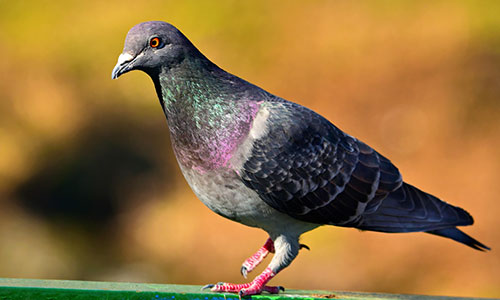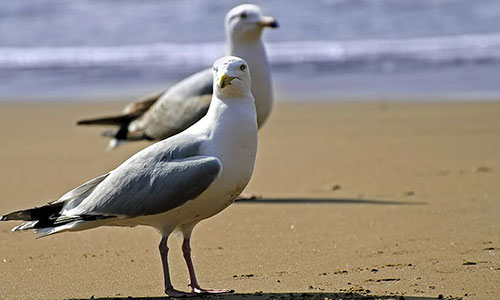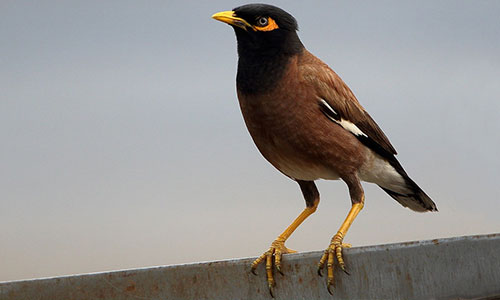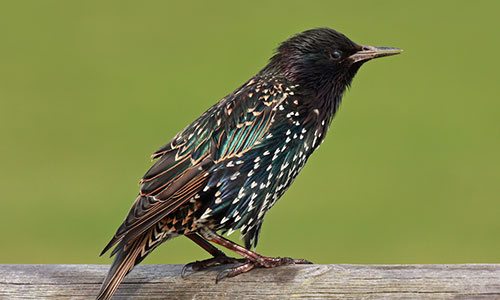Birds
Don’t let pest birds ruin your property, give them the Flick! Our expert technicians use innovative methods to prevent pest birds from nesting and causing damage to your property. With solutions tailored to suit your needs, we create effective and professional solutions for bird pest control that cause minimal harm to the birds while keeping your premises clean and secure.
Birds can cause damage to buildings and structures by nesting in or on them, creating structural damage and potential safety hazards. In some cases, birds can also become aggressive towards humans and pets, posing a threat to their safety. Additionally, bird droppings are unsightly and difficult to clean. Bird droppings can also contain bacteria and fungi that can pose health risks to humans.
Flick Pest Control offers a range of bird control solutions to help businesses and homeowners effectively manage and eliminate bird-related issues. From installing bird spikes and nets to using deterrents and traps, our pest control technicians provide professional and humane methods to keep pesky birds away from properties. We can assess the property and recommend the best course of action to ensure a bird-free environment. Trust Flick Pest Control for effective bird control solutions.

Commercial Pest Solutions
Bird Proofing Solutions
It is essential for businesses to prioritise the health and safety of their employees and customers. Bird not only pose a health risk but also damage property and reputation. Flick’s professional bird control and bird proofing solutions ensure a clean and hygienic environment for everyone. Our regular inspections and treatments help to maintain a pest-free workplace and protect your business from potential pest related damage. Trusting in Flick’s commercial pest control solutions is a smart investment in the long-term success and reputation of any business.
Learn more here or call 0800 710 010.
Common Bird Species

Pigeon
Apppearance
The common ‘rock dove’ pigeon has bluish-grey plumage, with an iridescent purple or green sheen on the neck and breast, and two black bars across the wings
Lifestyle
Pigeons don’t migrate and love nesting; especially on artificial ‘cliff faces’ created by apartment buildings, ledges or solar panels. They can seriously damage buildings with their droppings and also identify their ‘home base’ from far away using their sense of smell and hearing. So, once they have made your home theirs, it’s hard to get rid of them!
Habits
Large feral pigeon populations thrive in urban areas. Largely monogamous, they usually have 2 babies per brood, reproducing all year round but more aggressively in the summer and spring. They feed voraciously on seeds and scraps; in city streets and parks, pigeons are seen pecking at the ground in a never-ending search for food.

Sea Gulls
Apppearance
‘Silver Gulls’ are commonly called Sea Gulls. They have a white head, tail and belly, light grey back and black-tipped wings. In adults, the bill, legs and eye-ring are orange red.
Lifestyle
Sea Gulls are famously successful scavengers, pestering humans for handouts of scraps, raiding bins or unattended food containers or searching for rubbish. Other foods they enjoy include worms, fish, insects and crustaceans. They’ll take what they can get! These birds can become a nuisance for coastal properties and businesses.
Habits
Sea Gulls can drink both fresh and salt water, are found at virtually any coastal or watery habitat but rarely seen far from land. They nest in large colonies on offshore islands before returning to the mainland. Intelligent creatures, they mate for life and share parenting duties, learning sophisticated communication techniques to enhance scavenging.

Common Myna
Apppearance
The Indian Myna, or Common Myna, is brown with a black head. It has a yellow bill, legs and bare eye skin. In-flight it shows large white wing patches.
Lifestyle
Mynas have adapted to urban environments and can cause problems for humans. Favoured nesting locations are in the walls and ceilings of buildings, as well as tree hollows. Nests are messy and can consist of a variety of materials – leaves, grasses, feathers and bits of human rubbish are common and be an unsightly addition to properties!
Habits
Common mynas are known as bullies of other birds. Introduced in 1883, they have successfully pushed native birds from their natural habitats. Very territorial, they can fight ruthlessly with other birds. Accomplished scavengers, they feed on almost anything – insects, fruits, vegetables, pets’ food, scraps – and even fledgling sparrows.

House Sparrow
Apppearance
House sparrows are large finches. The male has a grey crown, black face and throat, with dark black and brown upperparts. The female is paler and has a pale buff eye stripe.
Lifestyle
Sparrows have spread successfully because they feed on a wide range of foodstuffs. They eat insects, spiders, berries, seeds, flower buds and scraps of food. They can become pests through nesting, plus also entering canteens and buildings to feed, with sparrows even learning sneaky tricks to open automatic doors!
Habits
Males and females form permanent pair bonds, with the female incubating the eggs. The nest is a large, messy ball of grass, wool, feathers and plant materials. Usually located in roof voids or crevices in walls. They breed aggressively in Spring.

Common Starling
Apppearance
The Common Starling has a wide variation in plumage, with the male glossier. Birds are black with large white spots in autumn, which disappear in breeding season.
Lifestyle
Breeding season in Spring sees the large winter flocks of Starlings scatter into pairs or small groups. Their nests are an untidy display of grass, leaves, twigs and rubbish. They also love nesting in roof voids and walls of human houses and can be aggressive and territorial when breeding.
Habits
Starlings are often sighted searching for seeds and insects on lawns and paddocks. Other food includes spiders, worms, human scraps and fruit crops. They love looking for anything on the ground and are often found in vast flocks, especially in the winter months.
I found Birds! Help!
Don't worry, we're here to help. Follow these steps to stay safe until help arrives!
Call a Professional
Call Flick Pest Control Immediately.
If you encounter birds in your home or business, you may be dealing with an infestation. Don’t wait until the problem gets out of hand – we can help protect your property and ensure the health and safety of those around you. Fill out the form below or call 0800 710 010 today.
Leave the Birds Alone
Trust Flick Pest Control to handle the situation
Our pest control technicians have the knowledge, experience, and tools necessary to effectively and safely eliminate pests from your home or business. Attempting to treat birds on your own can be risky and may not fully eradicate the problem.
We will and ensure a safe and effective outcome for your property.
There May be More!
Don’t Go Looking Around!
Flick’s pest control experts will perform a thorough inspection of the property to identify any areas where birds may be present, followed by the development of a treatment plan tailored to the specific needs of the situation. By implementing effective pest control strategies, we can help ensure a pest-free environment for you.
